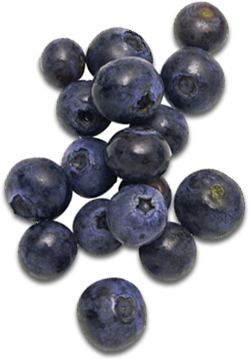no items to display
Vegetables Kids Will Eat: 10 Vegetables That Are Better for Your Kids than You Think
In a perfect world everyone would love kale and broccoli, and some people — even some kids — do. But everyone’s tastes are different, and sometimes health-conscious parents make it less likely their kids will get the vegetables they need by insisting on only the very best vegetables and ruling out the rest. After all, there are vegetables, and there are vegetables kids will eat.
The CDC recommends that children eat between one and three cups of vegetables per day, depending on how old they are and how much activity they get. With nine out of ten kids not getting the recommended amount of vegetables for their age, it’s a risky strategy to focus solely on the veggie superstars. That’s why I was interested to see this article in the Washington Post about the health benefits of overlooked vegetables.
https://www.washingtonpost.com/lifestyle/wellness/10-food-myths-that-are-hurting-your-kids/2016/01/19/cb5f8a6a-b96c-11e5-99f3-184bc379b12d_story.html
Four of them are in Juice Plus+:
· Cabbage: Many people think of cabbage is a cheap filler, but the truth is that like its trendy cousin kale, cabbage is also a cruciferous vegetable, which means it’s a powerful detoxifier. Cabbage is high in fiber, vitamin C, and vitamin K. Your kids may enjoy it in coleslaw or stir-fries. I just got my kid to eat a bunch of cabbage by tossing it in chicken noodle soup. She couldn’t tell what was cabbage and what was noodles!
· Carrots: Carrots have gotten a bad rap for having a lot of sugar, and while they may have more than other veggies, they also have fiber which slows its absorption. A lot of kids who don’t like many vegetables will happily eat carrots, and when they do, they get a healthy dose of beta carotene (used to make vitamin A), plus vitamin C and fiber. Some kids prefer the crunch of raw carrots and others like them cooked. Try fun dips for the raw fans and roasted carrots for those who like soft, smooth foods.
· Garlic: It’s a myth that garlic is flavorful but lacking nutrition. In fact, it’s been shown to support cardiovascular health and maintain blood sugar levels already within a normal range. It also supports upper respiratory health during the winter months. Whose kids don’t need that kind of protection?
· Parsley: If your kids treat this herb as a decoration and leave it on the plate, they’re not alone. A lot of grown-ups do, too. But parsley is packed with vitamin C, vitamin K, iron, and calcium. It’s tasty, too. Try both the curly variety and the Italian flat-leaf to see which your kids like best.
Some of the other kid-friendly vegetables profiled in the article, like potatoes, get their bad rap from the fact that they are most often eaten in unhealthy forms like chips and French fries. And while potatoes do have a high glycemic index (meaning they cause a quick surge in blood sugar), eaten in moderation they provide potassium, vitamin B6, vitamin C, and fiber. And, surprise, they are one of the most antioxidant-rich foods on the block — if you eat the skins and especially if you choose highly colored potatoes such as the purple variety.[1]
Similarly, high-fructose corn syrup has given corn a bad reputation. But that unhealthy sweetener has all the nutrition and fiber of corn stripped out of it. Like potatoes, corn has a lot of carbohydrates and shouldn’t be the only vegetable your kids eat, but it also has thiamine, folate, and antioxidants.
Eating vegetables is a good life habit for kids to acquire, so if meeting them halfway and letting them have a salad of iceberg lettuce (which isn’t the most nutritious green but does have some vitamin A and vitamin K) helps them eventually move on to a healthier spinach salad, it’s a good investment. Consider it a “gateway vegetable.”
Also mentioned in the article were celery and cucumber, commonly dismissed for being mostly water, which is not necessarily a bad thing. Good hydration is an essential component of a healthy diet and these water-rich fruits and veggies can help with that. Likewise, onion, like garlic, is often thought of as flavorful but lacking nutrition but, like celery and cucumber, has something nutritious to offer, including vitamins, antioxidants, and fiber.
Of course, with some kids, no matter how hard you try, they simply won’t eat as many vegetables as they should. While there’s no substitute for getting your kids to eat their veggies, taking Juice Plus+ can help bridge the gap between what they should eat and what they do.
References:
[1] Jemison J, Camire M, Dougherty M. Research revales potato as antioxidant powerhouse. The University of Maine. http://umaine.edu/agriculture/programs/agriculture-water-quality/potato-research/potato-antioxidant-research/






